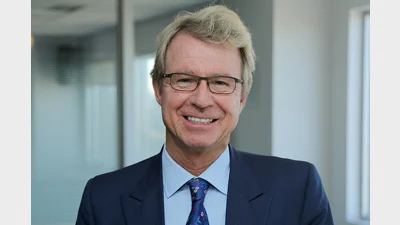Property investments back in favour


While the impact of the global financial crisis may have prompted many superannuation funds to lower their exposure to property investments, Damon Taylor writes that recent solid performance has returned them to favour in the minds of those making the allocation decisions.
In an investment environment in which the search for yield is constant, many super funds seem to find themselves reassessing their options.
Indeed, with lower, slower growth tipped within the domestic economy, property has been an increasingly attractive choice for super funds and one which Richard Stacker, head of direct property for Charter Hall, believes recent performance has justified.
“In terms of performance over the last 12 months, you’ve had all direct property do about 9.1 per cent,” he said. “You can then break it down across various asset classes but unlisted wholesale funds, with investors who are big pension funds and so on, they’ve done 8.9 per cent.
“Unlisted retail funds, which are really self-managed super funds (SMSFs) and your mum and dad investors, they’ve done about 9 per cent,” Stacker continued.
“And Australian REITs (real estate investment trusts) have done about 24 per cent.”
However, when looking at individual sectors, Stacker said that it was office, retail and industrial property that continued to be of most interest to institutional and super fund investors.
“So for office over the last year, the total return’s been 9.4 per cent,” he said. “Retail’s been 8.8 per cent and industrial’s been 9.3 per cent – so the average across all those three sectors is 9.1 per cent.
“Now, the long term average going back 10 to 25 years is roughly 9.1 per cent, so no matter how you look at it, things are pretty much in line with the long-term average.
“Across the board, property performance has been reasonably solid.”
With a similar focus on direct property investment, Chris Judd, head of property funds management for AMP Capital, repeated a similar story.
“To put it simply, the environment for unlisted property has been good and performance has been stable as a consequence,” he said.
“If you look at return metrics produced by IPD, which is the industry benchmark, it’s around 9 per cent year-on-year and for core real estate, that falls well and truly within targeted returns.
“Then if you look at the total return equation, around 6 to 6.5 per cent of the total return is generated from the income yield with the balance, obviously, through capital growth,” Judd continued.
“Now, the advantage of unlisted real estate is that all of that income is basically contracted rent via leases, so there’s a level of predictability in regard to the income stream coming out of core real estate.”
Like Stacker, Judd identified CBD offices, large regional malls, large logistics and industrial business parks as having performed particularly well.
“So in a relatively risk averse environment, institutions are attracted to the reliability of the yield,” he said. “And, as a consequence of that, we continue to see good support from domestic institutions.”
In fact for Stacker, it is that search for yield that has provided property investment with such a positive tailwind.
“If you look at the three areas we were just talking about – office, retail and industrial – in terms of office and retail, let’s say 70 per cent of the total return is coming from the yield and the rest is from growth,” he explained.
“Industrial property probably has close to 85 per cent coming from income and the rest growth.
“That’s probably why industrial, in particular, has been popular in the last 12 months,” Stacker continued.
“And so we’ve seen interest not just from self-managed super funds investing into funds, but also from local super funds and big overseas pension funds that probably haven’t had a great focus on the sector previously.
“They’re all looking at it, realising that they’re underweight industrial property and starting to remix their portfolios as a consequence.”
Yet the property investment story is about much more than just yield. If investors look back at the time that has passed since the global financial crisis (GFC), the key learnings for property investment seem to have been around gearing and liquidity.
In the aftermath, property investment has changed substantially, however, and for Leigh Gavin, senior consultant at Frontier Advisors, such changes could place investors in an interesting quandary.
“Gearing levels across listed and unlisted are clearly lower now,” he said. “In the unlisted space, the IPD/Mercer index, the gearing levels for that weren’t that high to start with – but they’ve kicked lower and they’ve stayed lower.
“For listed property, yes they seem to be semi-structurally lower for now at least,” continued Gavin. “But the ironic thing is that gearing is probably more accretive to property returns now than it has ever been.
“The best managers are borrowing at pretty good margins over obviously very low floating rates, and the fixed rates are pretty low too.”
The reality, according to Gavin, was that if an investor was considering the use of leverage, the market environment currently had within it some quite interesting ingredients.
“It’s pretty interesting because you’ve got an investor base that obviously wants less gearing than they’ve had in the past,” he said.
“But obviously, if you were ever going to gear, now would be the time to gear.
“Right now, the choices here aren’t easy.”
Offering a similar perspective, Judd agreed that liquidity and gearing were now top of mind for property investors and property fund managers alike.
“So if you use our funds as an example, we entered the GFC with targeted debt parameters of between 25 and 35 per cent,” he said.
“Through engagement with our investors, the preference was to reduce that range to 15 to 25 per cent and that’s the way we’re now managing that fund.
“But right across the market, you’ll find that core funds are more lowly geared,” Judd continued.
“You’ll also find that governance arrangements within a lot of core funds have improved, or not improved so much as evolved, and by way of example, we’ve established investor committees across our three core funds which meet every three to four months to discuss and update a group of investors with regard to our activities.”
According to Judd, such committees facilitated knowledge sharing that was beneficial both to AMP Capital’s client investors as well as the AMP Capital investment team as well.
“It does a number of things,” he said.
“It provides insight to that investor group with regard to how we’re managing their money, but it also allows us to get an understanding of how they’re thinking about their investment strategies more broadly.
“So overall, we’ve benefited from their insights and hopefully those that have participated in those committees are benefiting from our insights as well.”
For his part, Stacker said that the global financial crisis and, more particularly, the changes wrought by it, had impacted not just how property investment was managed but also what players remained in the sector.
“In terms of the managers that are still in the sector, you’ll see those funds have changed significantly,” he said. “Gearing has definitely come down – most funds are now providing gearing below 50 per cent.
“The quality of the assets too, I think, was a big issue pre-GFC,” Stacker added. “A number of the funds that have been launched in the last few years for self-managed super funds (SMSFs) and others to invest in have been higher quality.
“And I think around liquidity, people have been told that it’s not liquid until you sell the asset.”
However, Stacker reiterated that the big change to property investment had been around the quality of the managers.
“In our sector, of the top 10 pre-GFC in terms of funds under management, realistically Charter Hall is the only one left,” he said.
“So I think we’re starting to see some new people come through, funds managers who were probably just outside that top 10 pre-GFC.
“But it’s not just the fund managers that learned things through the GFC, it was investors as well,” Stacker continued.
“I think they’ve really been able to take a step back and now, when they do assess a property opportunity, they do actually look at what they learned last time around.
“Those things are definitely in the back of peoples’ minds.”
Yet if gearing and liquidity are on super fund investors’ minds when it comes to property investment, so too is opportunity.
With fund size ever increasing, the number of large, unlisted and institutional-grade property investments is constantly diminishing and so for Gavin, global property is invariably a consideration.
“The pool of superannuation here grows much faster than the pool of property stock, so realistically, to maintain a 10 to 12 per cent allocation to property, one day you’re going to have to think about offshore real estate,” he said.
“Having said that, we would never advocate investing offshore simply because you can’t invest domestically and you have to maintain an allocation.
“At the moment, for instance, funds would be looking at offshore investment more favourably if pricing hadn’t taken off the way it has,” continued Gavin.
“In the US and UK, their cap rates have fallen almost in parallel with their bond yields, so the best office buildings in Washington DC now trade on cap rates in the 4’s, which you’ve only got to justify if it’s a replacement for bonds.
“You have a triple net lease, it’s US Federal Government, so you treat it like a government bond which only makes sense so long as bond yields stay low.”
However if bond yields are going up, Gavin pointed out that it was vital to know why they were going up.
“If they’re going up because the economy’s going really well, then maybe there’s another leg up for property – but we struggle to see how you could have it both ways,” he said.
“If cap rates fall 200 or 300 basis points because Treasury yields have fallen 200 or 300 basis points, well the same thing should work in reverse.
“It will be interesting to see what happens over the next few years, but clearly the ‘why?’ of global and the ‘how?’ of global are really important questions.”
Alternatively, Judd said that while offshore property investment was indeed on the rise, Australian investors could still find ample reason to allocate funds domestically.
“It’s a slow-burn at the moment,” he said. “If you talk to a lot of our investors, they ask a legitimate question with regard to return expectations if they do export their capital offshore.
“So if they can invest and get a return of between 8 and 9 per cent domestically and invest offshore into core real estate that’s delivering 6 to 7 per cent, coupled with exchange rate, interest rate and, in certain instances, sovereign risk, is that actually going to deliver risk premia to warrant exporting that capital?” Judd asked.
“Now that will change over time and, to a certain extent, we’re seeing it already, but I don’t expect there to be a significant or material pickup in offshore activity in the foreseeable future.”
Looking to the future, however, Judd said that he shared Gavin’s views on the inevitability of offshore property investment.
“Australian real estate is about 2 per cent of the investable universe globally, yet we’ve got a pension framework that is, I think, the fourth biggest in the world,” he said.
“So there’s a weight of money being generated in Australia yet we’re still a relatively small property investment destination.
“So yes, at a point in time, as the capital that needs to be invested continues to grow, its got to find a place so you can expect that it is going to go offshore,” Judd continued. “But, as I said earlier, I would expect that to be a steady trend.
“There certainly won’t be any floodgate of capital going offshore immediately.”
So with desire for yield, recent performance and changing super fund demographics as a background, it seems property’s role in portfolios may be changing.
Indeed, with an increasing number of baby boomers now entering retirement, all allocations are shifting and for Gavin, property is no exception.
“What we’re talking to our clients a lot about at the moment is the prospect of lower, slower growth from the economy over the next 10 or 20 years,” he said.
“And, with bond yields starting where they are, the prospect of lower returns across pretty much every asset class as well.
“So we are talking to clients about getting their heads around a period of lower returns,” Gavin continued.
“But what that means for property, and unlisted property in particular, is quite interesting because in unlisted property, you’ve got to make commitments with that sort of 10-year view in mind.
“So in the past, 6 or 7 per cent yield with not much capital return wasn’t that attractive – but relative to the broader view across all asset classes that we’re seeing, it may not actually be that bad.”
Similarly, Judd said that property allocations were shifting in line with super funds’ changing focus.
“Yes, a lot of our clients are talking about that switch to pension phase,” he said. “How that is impacting asset allocation from a property perspective is still playing out, but you would expect the call for income-generating properties to be a large part of whatever allocation results.
“But beyond that, I think core real estate is delivering on its promise, which is providing long-term, stable returns.”
Recommended for you
Investors have slashed their US equity allocations to the lowest level on record, according to new data from Bank of America.
The message from experts in international trade and economists is that the Australian government should refrain from retaliating with reciprocal tariffs.
The market correction forecast by AMP’s chief economist is in full swing, with three weeks of turbulence culminating in significant losses on Tuesday.
Following a strong risk appetite in January, institutional investors have pulled back in February, with risk-seeking activity dropping to zero amid a decline in equity allocations.













